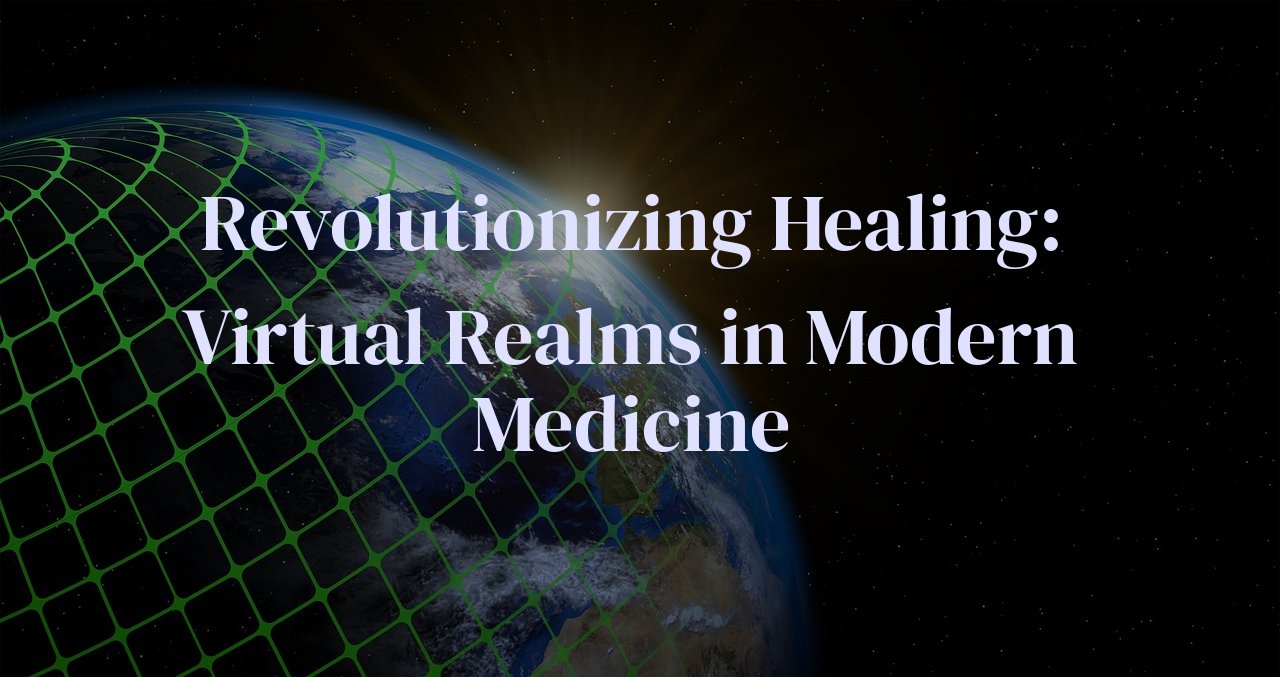
The intersection of technology and healthcare constantly evolves, introducing innovative tools that revolutionize how we train health professionals and treat patients. This blog delves into the transformative role of virtual reality (VR) in medical education and therapeutic interventions, offering insights into an immersive future that is already at our doorstep. By unboxing the multifaceted applications of VR in the field of medicine, readers can expect an exploration of real-world implications, hands-on training enhancements, and patient therapy advancements. Discover how embracing this high-tech approach can lead to more efficient training, better patient outcomes, and potentially lower healthcare costs.
Table of Contents
Redefining Medical Education with Virtual Scenarios
The digitization of education has transmuted myriad aspects of learning, and nowhere is this metamorphosis more pronounced than in the domain of medical education. The potential of virtual reality (VR) to recreate intricate biological systems and pathologies has flung open the doors to a realm where medical students can explore the vast intricacies of the human body without the constraints of the physical world. In the heart of this revolution lies Virtual Scenarios – an unprecedented tool that capitalizes on the immersive nature of VR to foster a deep-rooted comprehension of medical concepts and procedures.
Virtual Scenarios, leveraging VR technology, allow students to step inside a carefully crafted digital environment where they can dissect layers of virtual tissue to understand anatomical relationships with pinpoint accuracy. The haptic feedback and interactive features create an illusion so convincing it enhances the cognitive uptake of surgical techniques and complex theoretical knowledge. It’s a dance of digital and cognitive dexterity where every twirl is a lesson engraved in memory.
The advantage of such scenarios extends beyond mere visualization; they enable repeated practice in a fail-safe environment. Future doctors can perform virtual surgeries, diagnosing and treating ailments with no risk to real patients. This zero-consequence playground is vital for nurturing confidence and reinforcing decision-making skills, with a breadth of patient cases to cover rare conditions often not seen in traditional clinical training.
Furthermore, VR scenarios can be finely tuned to mimic emergent medical situations, demanding prompt and precise responses, thereby ingraining the poise and presence of mind so crucial in real-world emergency settings. They also open up opportunities for interdisciplinary learning, wherein a single virtual space can host a confluence of medical, nursing, and therapeutic trainees, fostering collaborative care practices that are essential in contemporary medicine.
This innovative pedagogical approach is not just enhancing the knowledge matrix of individual students but is reshaping the trajectory of medical education. It prioritizes experiential learning, bridging the gap between theoretical knowledge and practical application, and is a sturdy scaffold on which the future of medical training is being built.
Enhancing Surgical Precision Through VR Simulations
The advent of virtual reality (VR) technology has heralded a new era in the realm of medical surgery, offering an unprecedented platform for surgeons to hone their skills with remarkable accuracy. Imagine the intricacies of the human body, replicated in a virtual domain, providing a risk-free environment for surgical practice. VR simulations are not mere digital facades, but intricate recreations that mimic tissue textures, organ responsiveness, and even the complexities of blood flow. As surgeons navigate through these simulations, their dexterity and precision evolve, sculpted by the virtual experience.
Picture an aspiring heart surgeon, standing before a beating virtual heart, poised and ready. Through VR goggles, they observe the dynamic thrum of the heart, practicing delicate procedures before approaching a living patient. Each movement is captured, the VR equipment providing tactile feedback that mirrors the sensation of real tissues under surgical instruments. Such preparation ensures that when the moment to perform an actual surgery arrives, muscle memory and visual acuity are finely tuned, reducing the margin of error significantly.
Even seasoned surgeons find solace in VR’s embrace, as it allows them to rehearse for complex or rare procedures which come by scarcely in their practice. With the ability to simulate unexpected surgical scenarios, they can plan and execute strategies to overcome unforeseen obstacles without the stress of time pressing against a patient’s vitality. It’s in these rehearsals that the golden threads of surgical confidence are woven, ensuring that when faced with the actual unpredictability of an operation, their hands are steadied by experience, albeit virtual.
Beyond individual skills, VR simulations are pivotal in enhancing team coordination in the operating room. A well-orchestrated surgery demands the seamless interplay of professionals, each adept in their roles, yet harmoniously integrated into the surgical chorus. VR allows for these teams to practice together, fine-tuning their collective performance in preparation for the real-life symphonies of life-saving surgeries they will conduct. In the virtual world, communication can be practiced and optimized, spatial awareness enhanced, and emergency responses drilled until they become second nature.
The transformative impact of VR on surgical precision is not confined to the bounds of high-tech hospitals in developed nations. Through virtual bridges, this technology permits the democratization of surgical education, extending its benefits to surgeons working in resource-limited settings. Such global access to high-quality training can potentially equalize healthcare disparities, fostering a world where every surgeon, irrespective of geography, is armed with the elite precision that VR training can provide. The virtual realm is truly revolutionizing healing, one simulation at a time, sharpening the skillsets of surgeons to create a future punctuated with surgical successes.
Accelerating Recovery: VR as a Therapeutic Tool
The realm of virtual reality (VR) is not just for immersive gaming experiences; it’s also carving out a transformative role in healthcare, particularly in patient recovery processes. By leveraging VR’s unique ability to create controlled, interactive environments, medical professionals can foster faster and more effective healing. One application is in physical therapy, where patients navigating through injury or surgery-related mobility issues can engage in VR exercises. These exercises are designed not just to motivate by gamification but also to track range of motion in a way that feels less like a chore and more like an adventure, allowing for subtle increments in difficulty that adapt to patient progress.
Furthermore, VR is proving beneficial in the treatment of psychological conditions such as PTSD, anxiety, and phobias. Patients are gradually exposed to their triggers in a safe, controlled virtual space, which can be immediately adjusted or exited, providing a sense of security that traditional exposure therapy may lack. This method helps in recalibrating the patient’s response to stressors, potentially leading to quicker recovery times.
For patients enduring long-term hospital stays or challenging rehabilitative processes, VR can offer escapism to alleviate the stress, pain, and monotony often associated with these experiences. By transporting patients to peaceful virtual settings such as beaches or forests, the therapeutic use of VR has been associated with reduced pain levels and improved mental well-being. This psychological respite can lower the perceived duration of treatments like chemotherapy and even impact the patient’s need for pain medication, accelerating the healing journey both mentally and physically.
Additionally, VR’s capacity to simulate real-life tasks can pave the way for occupational therapy. Patients recovering from strokes or brain injuries can practice daily activities within virtual environments that mimic real-world challenges, promoting neuroplasticity and retraining the brain to regain lost skills in a setting that can be far more engaging and dynamic than traditional methods.
Lastly, the advent of biofeedback VR systems shows great promise in advancing recovery. By integrating physiological sensors, these VR setups can tune into a patient’s biological responses, adjusting the therapeutic content in real-time to optimize the healing process. For instance, a system might detect elevated stress markers and then guide the patient through calming breathing exercises or a serene virtual landscape to foster relaxation and recovery.
Bridging Distances: Virtual Reality in Remote Healthcare Training
Embracing the vastness of our world, Virtual Reality (VR) in healthcare training offers a beacon of hope for remote communities. This innovative tool is transforming the landscape of medical knowledge dissemination by virtually teleporting trainees into sophisticated learning environments, no matter how geographically isolated they might be. Imagine medical students in rural regions, practicing complex surgical procedures through VR simulations, honing their skills just as effectively as their urban counterparts, all without the need for costly travel or resources.
The potential for VR to significantly improve access to quality healthcare education in areas with a shortage of medical professionals is immense. By donning VR headsets, trainees can collaboratively navigate through 3D anatomical structures with peers and mentors from across the globe, exchanging knowledge and fostering international medical communities. This transcends the traditional barriers of distance, creating a fertile ground for cross-pollination of medical expertise and cultural exchange.
In regions where specialized medical trainers are scarce, VR serves as a bridge, enabling local healthcare workers to receive top-tier training directly from experts. The capacity to simulate emergency situations in VR allows these frontline workers to walk through critical procedures confidently, preparing them for real-world scenarios. It’s a monumental leap from textbook learning to immersive, hands-on experience in a risk-free setting, dramatically elevating the standards of patient care in underserved areas.
Additionally, VR is catalyzing the growth of remote continuing education for healthcare professionals, ensuring their skills remain sharp and current. This is especially crucial for maintaining the quality of healthcare in remote settings, where being current with the latest medical advancements and protocols can mean the difference between life and death. The engagement and retention levels with VR training modules surpass traditional online courses, indicating a new era where distance is no longer a hurdle for medical empowerment.
Last but not least, the emotional connection fostered by VR is unparalleled. Healthcare trainees can witness firsthand the human impact of medical intervention through virtual patient interactions. This immersive experience cultivates a deeper understanding and empathy towards the patient experience. In a world where medicine often crosses paths with technology, VR stands as a testament to the resilience of human connection, ensuring that no healer, regardless of location, is left behind in the digital revolution of medicine.
Cultivating Empathy: Patient Perspective Through VR Experience
Imagine stepping into the shoes of someone living with chronic pain or navigating the confusing corridors of a hospital as a patient with impaired vision. This profound immersion is now possible with Virtual Reality (VR), revolutionizing the empathy factor in healthcare. By donning a VR headset, medical professionals are transported into the worlds of their patients, experiencing firsthand the physical and emotional challenges they face daily. This sensory-rich journey isn’t just eye-opening; it’s heart-opening, fostering a bedside manner rooted in genuine understanding and care.
Moreover, VR technology goes beyond abstract sympathy, offering concrete insights into specific conditions. Through simulations, a doctor can perceive the blurring and disorientation a person with a cataract might endure or the overwhelming environment an individual with autism might perceive. Such experiences are crucial in honing a healthcare provider’s ability to tailor their communication and treatment strategies to suit the patient’s needs accurately, potentially enhancing patient satisfaction and adherence to medical advice.
The potential of VR to cultivate empathy extends to medical students, who can mature into more compassionate clinicians. They’re not just learning about diseases and their symptoms; they’re feeling the weight of those diseases on a human level. This deep level of empathy isn’t just a nicety—it’s becoming an integral part of patient-centered healthcare, leading to improved patient-clinician relationships, and in many cases, better health outcomes.
But the impact of VR on empathy isn’t confined to the boundaries of a clinic. It’s a tool for policymakers, designers of healthcare facilities, and even family members of patients, enabling them to appreciate the patient journey. By seeing through a patient’s eyes, the environment and procedures can be adapted to be more inclusive and considerate, thereby enhancing the healing process. By bringing this technology to the forefront, we’re not just remodeling medical education and treatment—we’re reshaping the heart of medicine, ensuring that every patient feels seen, heard, and understood.
Conclusion
The potential of virtual reality stretches far beyond gaming and entertainment, embedding itself deeply into the realms of medical training and patient therapy. As we’ve journeyed through current advancements and the exciting prospects on the horizon, it is clear that VR stands as a beacon of innovation in healthcare. By harnessing the power of virtual environments, medical professionals can enhance their skills, patients can receive innovative treatments, and the overall quality of healthcare can soar to new heights. The virtual future of medicine is here, reshaping lives and crafting new possibilities for a healthier world.



